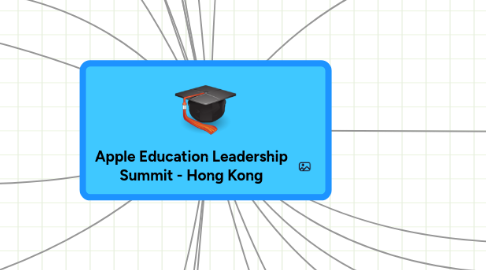Apple Education Leadership Summit - Hong Kong
by Egmond Boon


1. Ann and William Martin Madeleine Brooks 1:1
1.1. Training team with Expert groups and tresure hunt
1.2. iLife package
1.3. Exit message
2. David Larson
2.1. Proof of effective learning
2.2. Newspaper articles
2.3. Slideshow with examples
3. Tim Bray 1:1
3.1. Framework Marzano
3.2. Don't Push the teachers
3.3. Mindmeister
3.4. Wiki
3.5. Objective first than the skills with tools
3.6. Groep 1 2 ICT basisvaardigheden
3.7. Groep 3 4 Cruciale ICT IPC vaardigheden accent op aanvankelijk lezen, rekenen, schrijven....mbv van de computer.
3.8. Groep 5 6 7 8 Cruciale ICT IPC vaardigheden - MI - Eigen emailadres (epals.com; http://www.epals.com/ gmail; https://www.google.com)
3.9. Already give the children the objectives-sources and timeline when they have a test orhave to create a product where they show the objectives.
4. Marco Torres
4.1. From Schooling to Learning
4.2. Producers or receivers
4.3. Children love to learn a lifelong when they are engaged
4.4. Learning 24/7
4.5. How do we assess creativity
4.6. YouTube is the stage to the world
4.7. Flickr; http://www.flickr.com/
4.8. YouTube;http://www.youtube.com/
4.9. Music; http://creativecommons.org/
5. FRAMEWORK will be MARZANO - http://www.shiftedlearning.org/wiki/Marzano_and_Web_2.0
6. LESSONPLAN
6.1. Objective
6.2. Context
6.2.1. Joy for learning and enrichment with computer.
6.3. Content
6.3.1. Joy for learning and enrichment with computer.
6.4. Metacognition
6.4.1. Digitalportfolio or Blog
7. OBJECTIVES are ICT IPC CRUCIAL SKILLS
8. HAVE AN OPEN ENVIRONMENT and LEARN CHILDREN HOW TO WORK AND LIFE WITH THE OPPERTUNITIES
9. Confince parents - teachers and Board 1:1
9.1. Sources
9.2. Marzano
9.3. Objectives
9.4. Skills
9.5. Grade 6 bring their laptops to middleschool. In their laptops they have all their learning processes, sources, evaluations, portofolio, superschemes etc. The can look back.
9.6. Grade 6 is getting used to work and plann with their laptops.
9.7. Teachers start small and monitor with remote desktop. Collaborate and use laptops wherever possible.
10. IDEAS
10.1. Newspaper by kids
10.2. LCD screen in hall to present childrens digital content.
10.3. Podcasts
10.4. Vodcasts
10.5. Verzamel foto's van mensen - 1 tot en met 100 jaar
10.6. HSL brochure for kids of previous group - Wat is het verschil en wat is hetzelfde in groep 6? Wat moet je te weten als je naar groep 6 gaat? Wat moet je meenemen naar groep 6? Welke woorden moet je kennen als je naar groep 6 gaat?
10.7. Wiki - Schrijf samen een verhaal
10.8. Maak aan het begin van het jaar een 'Wanted' poster waarin de kinderen zichzelf voorstellen.
11. IT Manager
11.1. Leadership by Vision
11.2. IT Leader
11.3. IT Innovator
11.4. IT Tech Specialist
11.5. IT Implematation specialist
12. Children
12.1. Make a questionaire about computers in education
12.2. Ask what tools they want
12.3. Ask what computers did for education
12.4. Write safety rules together how to use a computer properly
13. Teachers
13.1. Support them
13.2. Make them enthousiastic
13.3. Ask what computers did for education
13.4. Write safety rules together how to use a computer properly
14. We look at technology as a tool, but our students see it as an environment. Spaces are owned by children.
15. Tom Kelley
15.1. Insights come from extreme users, have to look at BOTH ends of the curve for innovative ideas Inspiration, Ideation, Implementation: process of innovation. Designers have a distinct way of solving problems...viability,desirability, feasibility
15.2. The antropologist
15.3. The experimenter
15.4. The cross-polulator
15.5. Hurdler knows where to jump blindfolded - Know where to expect problems and be prepared
15.6. http://www.tenfacesofinnovation.com/tomkelley/index.htm
16. Vivien Stewart
16.1. 21 century skills - What is a global skill set?
16.1.1. Knowledge of cultures, regions, issues
16.1.2. Being able to communicate, more than one language, coupled with
16.1.3. Sensitivity: values, perspectives and respect
